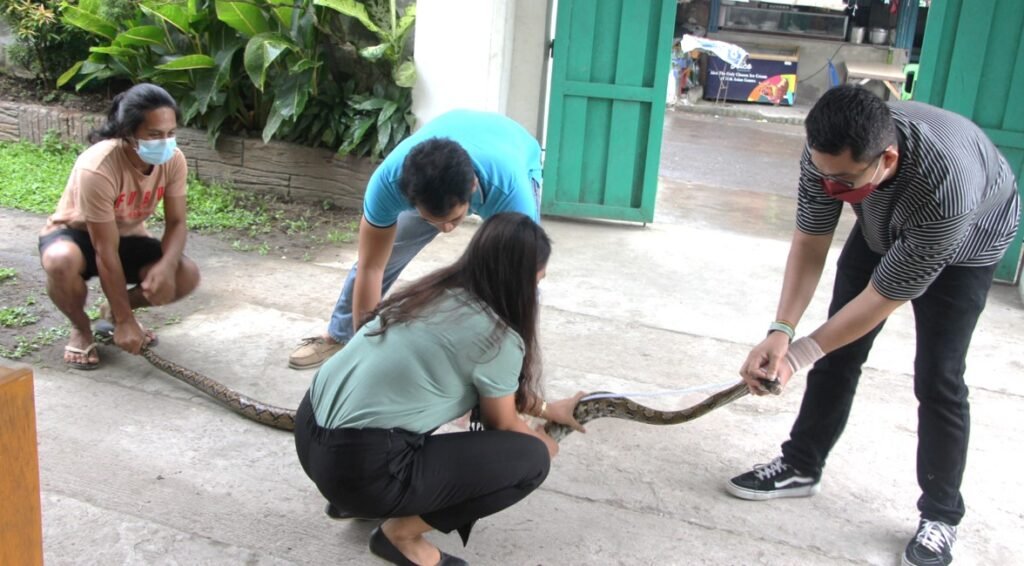- CHERYL G. CRUZ
A 250-centimeter reticulated python (Malayopython reticulatus), weighing about five kilos, was turned over by a concerned citizen to personnel of the Provincial Environment and Natural Resources Office in Bacolod City Monday.
It will be released into a forested area after ensuring that it is in good condition, said the PENRO Negros Occidental, headed by Engr. Joan Nathaniel Gerangaya, adding that under Administrative Order 2019-09 of the Department of Environment and Natural Resources, the reticulated python is classified as Other Threatened Species (OTS).
This means that the species is under threat from over collection throughout its range and is likely to be moved to the vulnerable category in the near future. It is also threatened due to predation, destruction of habitats, or other similar causes.

The public is reminded that collection and possession of wildlife is guided by Republic Act 9147, or an Act providing for the Conservation and Protection of Wildlife Resources and their Habitats, and any violation is meted out with corresponding sanctions and penalties, the PENRO said.
Under RA 9147, any person found harming, killing, or exploiting OTS will be imprisoned for one to two years, and/or fined ranging from P20,000 to P200,000.
DAO 09, signed by then Secretary Roy Cimatu on July 12, 2019, updated the national list of threatened Philippine fauna and their categories, as established under DAO 2004-15.
There are 22 species of mammals, 33 birds, nine amphibians, 37 reptiles including the reticulated python, and 444 invertebrates under the updated OTS list.
The critically endangered species include eight mammals, like the tamaraw, Visayan spotted deer, dugong, Dinagat and Ilin hairy-tailed cloud rats, golden-crowned fruit bat, Philippine bare-backed fruit bat, and the Visayan warty pig.
There are also 32 birds, six reptiles, the amphibian Gigantes limestone frog, and 13 invertebrates categorized as critically endangered species, which means that these are either facing extremely high risk of extinction in the wild in the immediate future, or presumed as extinct.
There are nine mammals, 40 birds, five reptiles, the amphibian Negros limestone frog, and six invertebrates in the endangered list, or the species not critically endangered but whose survival in the wild is unlikely if causal factors continue operating.
The list also includes 16 mammals, 79 birds, three reptiles, 21 amphibians, and 321 invertebrates as vulnerable species, or those neither critically endangered nor endangered but is under threat from adverse factors throughout their range and likely to be moved to the endangered category in the future.
The classification is based on destruction, modification or curtailment of habitat or range; over-utilization for commercial, recreational, scientific or educational purposes; natural or man-made factors affecting the existence of wildlife; perceived/observed reduction in population size and area of occupancy; and small population size and/or restricted population and continuing decline in population./CGC




